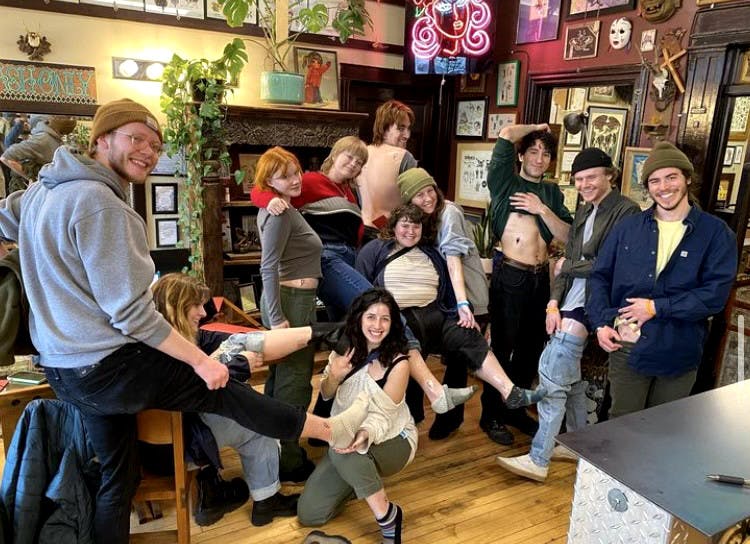Whether you have five roommates or 29, cooperative housing offers a community-centered living experience.
Co-ops are structured around a democratic, self-governance style membership. Every individual has set responsibilities they have to complete throughout each semester. For psychology senior Maeve Denshaw, this includes occasionally cooking meals for all 21 of her housemates.
“I love my job,” Denshaw said. “It can be stressful, feeding 21 people, but you can get creative with it.”
Other chores may include doing the grocery shopping for the house, cleaning hallways or bathrooms and being in charge of filing maintenance requests.
Each member of the co-op has a vote in the way the house is run, including who moves in. After filling out the online application through the Student Housing Cooperative, potential house members attend a community dinner at the house they are looking to live in.
Afterward, the current house members vote on accepting the new resident.
“The idea is that it’s a group of people who support one another,” Denshaw said. “And have the competence, but also the confidence, to support a group of people in a living situation.”
Cooperative housing often has lower living costs than other forms of student housing. Denshaw said this is because rent is paid to the Spartan Housing Cooperative and not a landlord. All MSU co-ops are not-for-profit organizations and rent is set at a lower cost.
House members determine charges beyond rent through voting. House charges make up the house budget. The budget funds expenses like grocery shopping, utilities and money to put into savings.
Public policy senior Sky Stillwell has lived in cooperative housing at MSU since 2020. Stillwell said their favorite part of co-op living is the community created within the houses.
“I’m the executive vice president and vice president of membership for the co-ops as well,” Stillwell said. “So, it’s a really stressful job, but having my housemates there to support me and be a family for me is definitely my favorite part.”
While Denshaw is only in her second month of co-op living, she said the best part is the different kinds of people she has been able to meet.
“The people here are accepting of everyone,” Denshaw said. “It doesn’t matter who you identify as, what race you are, how rich or poor you are, it doesn’t matter. You have a space in this house. And, it brings in a wide variety of amazing people and I think I needed that.”
For students looking at living in cooperative housing, Stillwell said it is important to remember the goal is to create a living community, not just to find roommates.
“It’s also an intentional community,” Stillwell said. “So, you have to be ready to work towards that and live cooperatively with your housemates as well. That’s definitely a difference to other housing options and something people really should be ready for.”
Support student media!
Please consider donating to The State News and help fund the future of journalism.
Discussion
Share and discuss “Community living: An inside look at cooperative housing” on social media.







